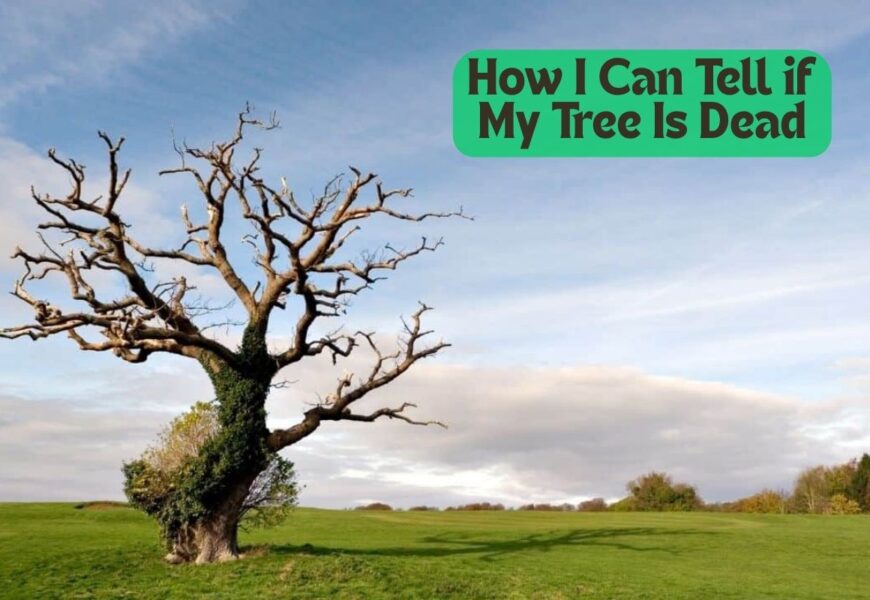Introduction
Trees add beauty, shade, and value to any landscape, but when they start to decline, they can quickly become a safety hazard. Many homeowners wonder how I can tell if my tree is dead before it causes damage or spreads disease to nearby plants. Identifying the warning signs early can save you time, money, and protect your property. From fallen branches to fungus growth, certain symptoms are easy to spot if you know what to look for. This guide breaks down the top 10 signs so you can confidently assess your tree’s health and take the right action.
10 Easy Signs Your Tree Might Be Dead
1.Fallen Branches and Debris Around the Tree
If you constantly notice sticks, twigs, or even large branches scattered beneath your tree, it may be an early warning sign of decline. Healthy trees typically hold their branches firmly, even in windy conditions, while a dying tree will shed weak or brittle limbs frequently. This happens because the internal structure loses strength, making it unable to support its own weight. Accumulating debris at the tree’s base shouldn’t be ignored, as it signals stress or disease. Observing this sign early allows you to take action before the tree becomes a safety hazard.
2.Bark Damage or Peeling
One of the clearest signs of a dying tree is bark that starts peeling away or falling off in large patches. Healthy trees continuously shed and regrow bark, but when big sections are missing, it signals stress or disease. Exposed wood underneath is more vulnerable to rot, pests, and weather damage, which speeds up decline. Sometimes the trunk may also develop vertical cracks alongside peeling bark, weakening the tree further. If you notice this condition spreading, it’s a strong indication the tree may not survive without intervention.
3.Signs of Rot or Fungus
Rot and fungal growth are major indicators that a tree is in serious decline. Mushrooms, conks, or other fungal bodies growing on the trunk or near the roots suggest internal decay. These organisms feed on weakened wood, breaking down the tree’s structure from the inside out. As rot spreads, the tree loses strength and becomes more likely to drop heavy branches or collapse. If you’ve been wondering how I can tell if my tree is dead, spotting fungus early is one of the clearest warning signs.
4.Leaning Trunk or Branches
A tree that suddenly leans or develops drooping branches often signals instability or root damage. While some trees naturally grow at an angle, a new or worsening lean usually means the support system underground is failing. This can happen due to soil erosion, storms, or weakened roots from disease. A leaning tree poses a serious safety risk, as it may topple without warning. If you notice a significant tilt, it’s best to have a professional assess the danger quickly.
5.Open Wounds or Cracks
Large wounds or cracks on a tree’s trunk are more than just cosmetic damage—they often signal deeper structural issues. These openings may occur after storms, poor pruning, or accidental injury, exposing the inner wood. Once unprotected, the tree becomes more vulnerable to pests, moisture, and rot. Vertical splits also disrupt the flow of nutrients, weakening the tree over time. If you’re asking how I can tell if my tree is dead, these wounds are a critical warning sign.
6.Lack of Leaves or Foliage
When a tree fails to produce leaves during the growing season, it’s often a strong sign of decline. Healthy trees should have full, vibrant canopies, while dying ones may show sparse or no foliage at all. Sometimes leaves may appear but quickly wilt, turn brown, or fall prematurely. This lack of growth means the tree can’t photosynthesize properly, leading to further weakness. A bare canopy compared to surrounding healthy trees is a clear red flag that your tree may be dead.
7.Pests and Infestations
Unwanted pests like termites, beetles, or carpenter ants often target weak or dying trees. These insects bore into the wood, leaving behind small holes, sawdust piles, or hollow sections in the trunk. Infestations not only accelerate decay but also make the tree unstable and unsafe. Birds or other animals feeding on the trunk may also signal hidden insect activity. If pests are present alongside other symptoms, the tree is likely in serious decline.
8.Damaged or Exposed Roots
A tree’s root system is its lifeline, and when it’s damaged, the entire tree begins to decline. Roots may become exposed due to soil erosion, construction work, or heavy foot traffic around the base. Signs of root rot, such as soft spots, decay, or unpleasant odors, usually mean the roots are failing. Since they provide both nutrients and stability, damaged roots often cause leaning trunks or thinning foliage. Observing this problem is one way of knowing how I can tell if my tree is dead. If the roots remain unhealthy, the tree’s long-term survival is unlikely.
9.Brittle or Fragile Branches
When branches snap easily with little force, it’s a clear indication the tree is losing vitality. Healthy branches are flexible and show green tissue inside, while dead ones are dry and hollow. Brittle limbs often fall during mild winds, leaving scattered debris around the base. This not only signals poor health but also creates safety risks for people and property nearby. Regularly testing smaller branches can help you identify a dying tree before it becomes dangerous.
10.No Green Under the Bark
A simple scratch test can reveal if a tree is still alive. By gently scraping away a small section of bark, you should see a layer of moist, green tissue underneath. If the layer is brown, dry, or absent, it’s a strong sign the tree is dead. This method works best on several spots, as some branches may still show life while others don’t. Consistently finding no green beneath the bark confirms the tree is beyond recovery.
What To Do If You See Signs of a Dead or Dying Tree
If you suspect that you have a dead tree on your property, don’t leave it there until it splits in half and falls over. If it falls, it could damage your property or a neighbor’s.
You should call a tree removal company as soon as you can. Most tree services will be able to explain the signs of a dying tree. They will let you know if you can salvage the tree or if it needs to come down.
Conclusion
Knowing the warning signs of a dying tree can save you from potential hazards and costly damage. By paying attention to changes such as brittle branches, peeling bark, or root problems, you can catch issues before they worsen. If you’re still wondering how I can tell if my tree is dead, these simple checks provide a reliable answer. Acting quickly ensures the safety of your property and protects surrounding healthy trees. When in doubt, consult a professional arborist to determine the best course of action.















